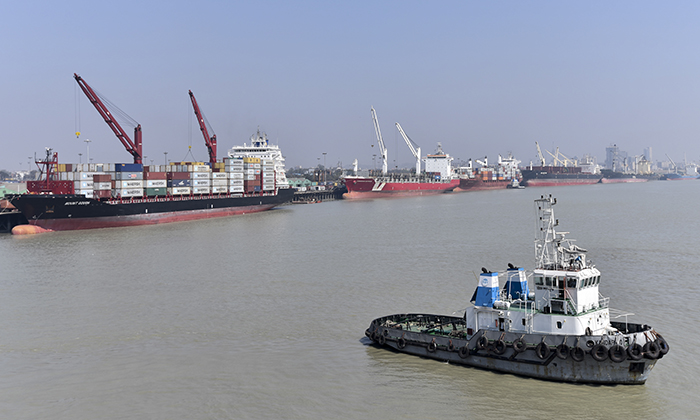Navigable river routes vital to reaping benefit of Bangladesh's sea access
Success of the much-hyped sea access Bangladesh granted to the landlocked northeastern states will depend largely on making existing river routes via the neighbouring country navigable, experts say.
;
Success of the much-hyped sea access Bangladesh granted to the landlocked northeastern states will depend largely on making existing river routes via the neighbouring country navigable, experts say.
Last week, when a consignment of TMT steel bars and pulses reached Tripura from Kolkata via Bangladesh’s sea route, India’s external affairs ministry described the transhipment as a “historic achievement” towards strengthening India-Bangladesh maritime and economic partnership.
The movement was undertaken under the agreement between the two countries on use of Chattogram and Mongla Ports for movement of India’s transit cargo through Bangladesh. It was, however, not the first time that Bangladesh allowed India to use its sea route to tranship cargo to Tripura as has been widely reported.
In 2011, huge equipment for the ONGC’s Palatana power project in Tripura was transhipped from Kolkata via Bangladesh’s Ashuganj River port. Two years later, Bangladesh again allowed India to transport 10,000 tonnes of rice to the northeastern state from Kolkata via Ashuganj port in Brahmanbaria district, which is around 40 kilometre from Tripura’s capital Agartala. From the port, the consignment was taken to Tripura via road.
The connectivity to Tripura via sea route between Kolkata and Chattogram had been operational until the 1965 war between India and Pakistan. At that time, the present day Bangladesh was part of the then East Pakistan. Immediately after the creation of Bangladesh as a nation state, the two countries in 1972 signed a protocol on transit and trade through inland waterways.
However, due to lack of round-the-year navigability of large vessels though river routes, maritime trade between the two countries could not make much progress. Since the Kolkata-Ashuganj-Akhaura river route became operational in June 2016, only around 20 cargo vessels have used it.
Unless the waterways to connect the major river ports of the region, particularly Assam are developed, the access to Bangladesh’s two sea ports alone would not dramatically change the region’s economy, said Pabitra Buragohain, president of the Federation of Industries and Commerce of North Eastern Region (FINER).
“Though we are optimistic and happy about the development, this is just a beginning. Other subsidiary issues such as development of infrastructure to connect the ports and augmentation of river routes are vital to make the maritime trade to and from Northeast viable,” he said.
To facilitate water transportation, the Bangladesh government has prepared a dredging master plan to dig a total of 10,000 km of rivers to enhance their navigability. According to a report by the Bangladesh government, the length of the country’s inland waterways during the rainy season is about 24,000 km, which goes down to 6,000 km in winter.
The digging is also underway to enhance the draught of 470 km of waterways linked to the Bangladesh-India river protocol route — 175-kilometre stretch from Sirajganj to Daikhawa in the Jamuna river (Brahmaputra in Inda) and 295 kilometre stretch from Ashuganj to Zakiganj in the Kushiyara, a branch of the south Assam’s Barak river. India is providing 80 per cent funding to the project that will help improve water transportation to Silghat and Karimganj of Assam.
On the Indian side, the Union government in 2017 announced a ₹250-crore project to dredge the Brahmaputra to improve the connectivity to northeast via water to ease the region’s dependency on the narrow Siliguri Corridor of around 22 kilometres width to connect with other parts of the country.
However, an expert committee formed by the Assam government earlier this year said dredging operations along the entire length of the Brahmaputra will not be a feasible option, and pointed out how in the past, such exercises carried out by the Inland Waterways Authority of India (IWAI) and water resources department of Assam did not make much headway.
